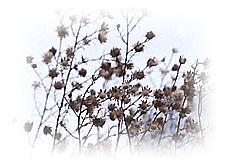
Otto Modersohn, Worpswede, 1903
Her colors are wonderful -- but the form ?
The expression ! Hands like spoons,
noses like cobs, mouths like wounds,
faces like cretins. She overloads things. Two heads,
four hands crammed into the smallest space.
And children, at that. It is difficult to advise her.
I’d hoped the months in Paris would cure her
of discontent, and reform
the less-than-intimate spaces
that riddle our marriage. I’d substitute teaspoons
for brushes if that would turn her head
away from the canvas for a moment and toward my wounds.
Your work lacks study, nature. That wounded
me, spoiled the rapture of her
return. Each morning she heads
straight for her atelier, now. Problems of form
pull her from the unwashed plates and spoons
that clutter the table, haphazarding white space
with jam and stain. What about the space
we inhabit, Dear ? My wounds
open like mouths, but your spoons
just brush their lips. What she saw in Paris changed her.
Nights, in bed, she raves how nature’s forms
slide into and over each other. I clutch my poor head
and roll away. Cold marmoreal heads
of ancient sculpture, the space
in Hayashi woodblocks, forms
and rough intricacies seduced her from the wounds
that gape on the pillow beside hers.
Travailler, toujours travailler. That wretched Rodin spooned
her with the same honey which he spooned
into Clara Westhoff’s head.
My malweiber, paintwife. Her
Berlin cooking lessons, all dithered into space.
She who was my balm now is my wound.
Winter approaches. Outside, the dim Worpswede light deforms,
to shadows spooned on mud, overthronged space:
birches, seedheads, black canals like wounds
she’s gouged in her marriage, faithful just to form.
3.13.99
I have a poster of Paula Modersohn-Becker's Self Portrait with Amber Necklace on the wall of my office. I've had this poster for decades, and can't remember where I got it, or when I discovered her paintings.
She was close friends with Rilke, and Rilke's wife Clara Westhoff, also a painter.
Her paintings are beautiful.
The first stanza of the sestina is cribbed from her husband's journal. He was chagrined at how painting distracted her from the marriage. He was also an artist, but must more conservative than his wife.
She died young shortly after childbirth, probably of a pulmonary embolus. Rilke's "Requiem For A friend" is for her.
No comments:
Post a Comment